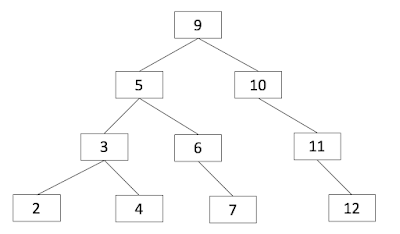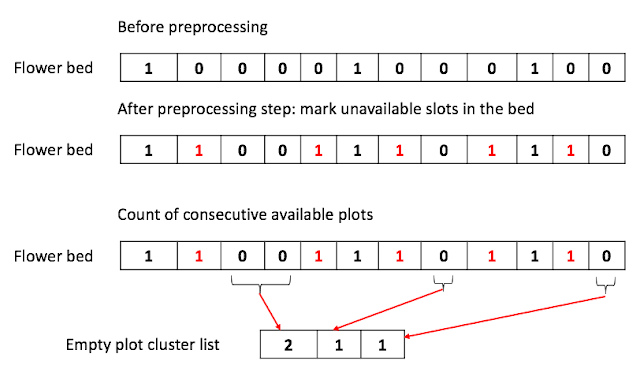Flattening the Tree into Double linked list
Problem
Given the binary tree as shown below: |
| Figure 1. Binary Tree |
Your algorithm should produce the double-linked list as below:
ANSWER
Given the binary tree, we first need to traverse values in the nodes in ascending order within the tree.
We can use the In-order search strategy to traverse the tree in ascending order. The following is the algorithm.
Inorder_tranverse(node *cur)
{
if (!cur)
return;
Inorder_tranverse(cur->left);
// We need to do something here
Inorder_tranverse(cur->right);
}
Now, we have the strategy to traverse in the correct order, What is left is to find the way to build the double-linked list. To achieve this we would need two external pointers: head, tail to remember the start of the linked list and the end of the linked list.
Basically, given the current node, we do the followings:
1) if head is empty, assign current node to head and tail then exit.
2) if the head is not empty, let tail->right point to the current node
3) let cur->left point to tail
4) move the tail pointer to cur
The construction of the linked list will finish as soon as the in-order traversal is one, thereby giving the running time of O(N), where N is the # of nodes in the tree.
Here is the complete code running in O(N).
Practice statistics
14:28 mins: to write up the algorithm
05:04 mins: to verify the code
UPDATE(2019-07-28): solved the problem using in-order search and global pointers, head, and prev.
Took too long to fix the bug in additional print logic for "<->". I was assigning prev incorrectly in the print logic. In the real interview, don't bother adding it.
Practice statistics
6:00: algorithm
11:33: to write the code
05:20: to review the code and fix the code (check the answer correctly.)
13:53: to fix the additional printing method. In the real interview, I won't bother to print this arrow.
There was a bug in that logic assigning prev after the current is updated.
UPDATE(2022-06-11): solved again in python. make one silly mistake in the test input.
07:00: for working algorithm
16:00: coding with the bug in the test input tree (accidentally recursive tree)
06:00: to fix the bug in the input tree


Comments
Post a Comment